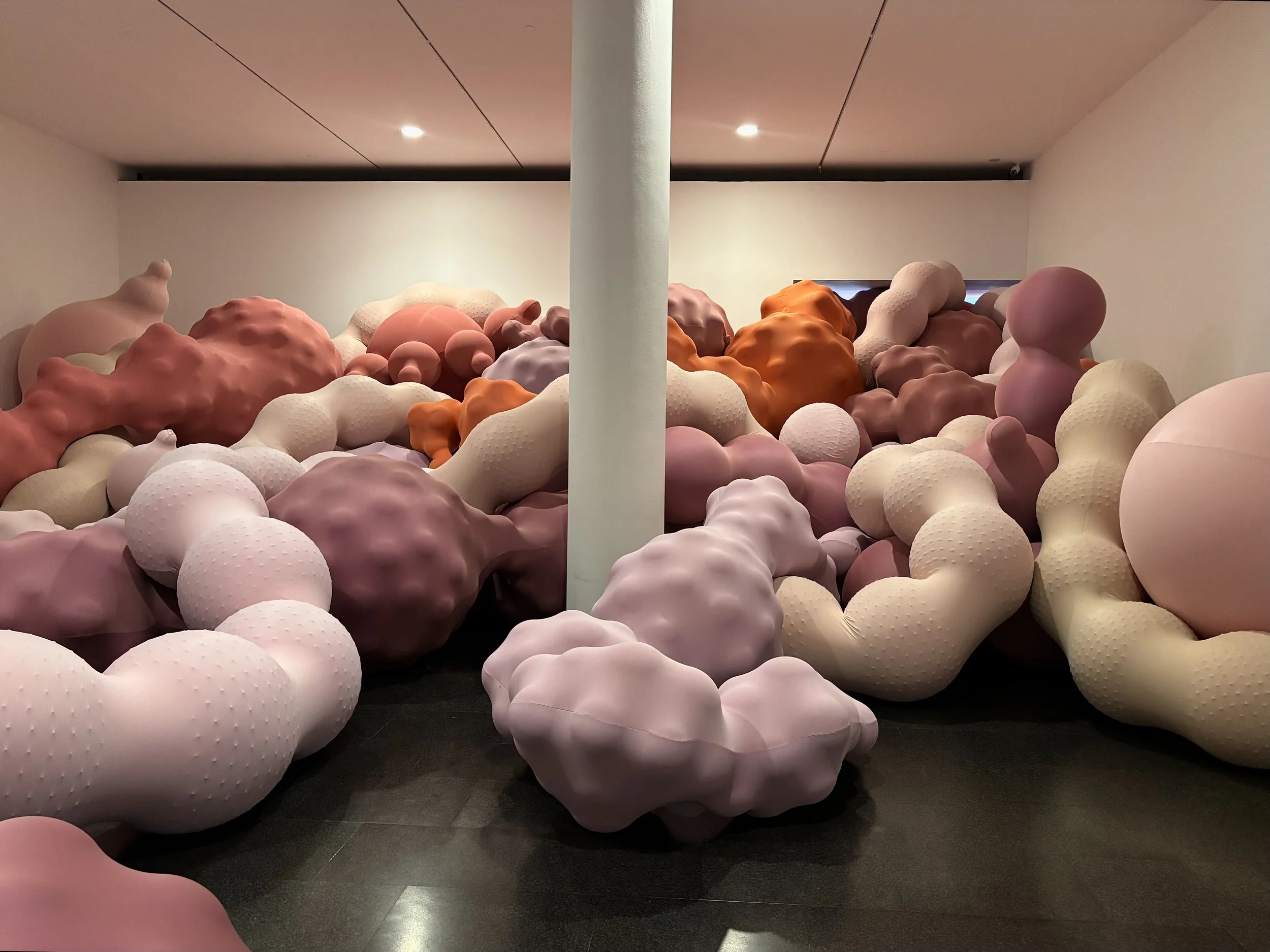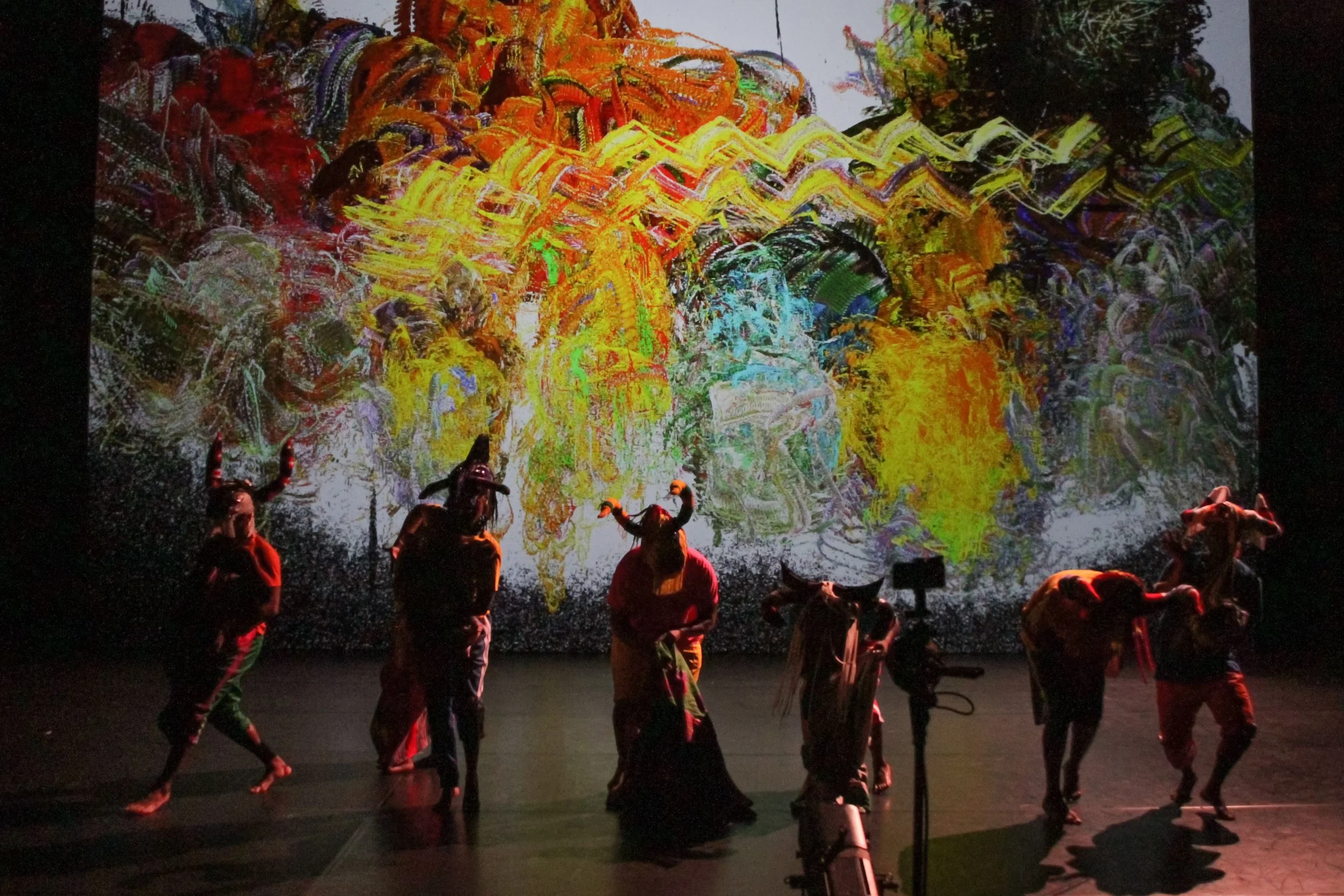A Catalan culinary sojourn: from tapas to timeless desserts
The Quest for Tapas
Our first evening in Barcelona naturally began with a craving for tapas. A friend had recommended a nearby area, describing it as both affluent and vibey. However, our walk led us through desolate streets, noticeably lacking in the promised ambiance. It was late by English standards, but prime dining time in Spain—or so we thought. It turns out Barcelona were playing in a football match.
We walked for the amount of time where the number of restaurants viewed intersects with rising hunger, before choosing something that looked well-lit, relatively full and had a menu detailing what we know of Spanish food - Pulpería Can Lampazas.
Tapas at Pulpería Can Lampazas. Image credit MTotoe.
A Hearty Introduction
The tapas prices were somewhat startling, but it was our first night, and we were ready to indulge. We ordered calamari, padrón peppers, pan con tomate, and a vegan rice dish before the waiter kindly interjected and told us that was more than enough.
Three enormous dishes came. It must be that here people eat in larger groups, something to do with a more communal culture. The calamari was exactly the right level of salty and fried, the padron peppers were huge. The tomato bread was soft and unassuming. That said, there is only so much of those foods you can eat in one night. Then came the rice, which I’d expected to be without colour or flare, it was quite the opposite. This is the kind of dish that needs constant care, and it had received it. Soft vegetables harmonised with an enjoyable detection of oil.
Vegetarian dish at Pulpería Can Lampazas. Image credit MTotoe.
A Sweet Discovery
The restaurant felt authentic enough to sample a pudding, and we were recommended a cake called Larpeira, traditionally enjoyed during the holidays. It is said to not be known outside of Galicia (Northwest Spain).
The cake was ethereal in texture, with a chocolate-infused flavor that was both delicate and robust, reminiscent of honey. I later learned that a 'pastry milk' is poured over a light cake, resulting in this nuanced dessert. If you come across it, don't hesitate to try.
Larpeira. Image credit Olivia Samuels.
The cake was ethereal in texture, with a chocolate-infused flavor that was both delicate and robust, reminiscent of honey. I later learned that a 'pastry milk' is poured over a light cake, resulting in this nuanced dessert. If you come across it, don't hesitate to try.
Morning by the Sea
The next morning, after a much-needed fast, we took a train to Garraf, a quaint beach town just over 30 minutes from central Barcelona, for a late breakfast at the Little Beach House Barcelona . The place was nearly empty, save for a few well-dressed individuals in their 30s, AirPods in ears.
Seated in low-slung chairs with the sun streaming proudly in, I ordered the full local breakfast: Iberico ham, a cold omelette packed with thinly sliced potatoes, multi-coloured, melt-in-the-mouth peppers, pan con tomate (of course), all concealing slices of manchego cheese. Every element was delectable—the ham perfectly greasy, the cheese robust without overpowering (Manchego sometimes overshoots here), and none of the heaviness that often follows the full English version.
Breakfast at Little Beach House Barcelona. Image credit Olivia Samuels.
A Midday Feast
After a brisk morning of cultural exploration, a local friend recommended one of the few remaining authentic Catalan eateries in Barcelona - Kikiriki, suggesting we opt for the menú del día (menu of the day). To my astonishment, the entire meal, including wine, water, and three courses, cost only €14.50—a rarity in a city increasingly overrun by tourists and expats.
I began with a chickpea and spinach stew; the chickpeas were notably larger and softer than those back home. My friend referred to this as 'granny's food,' hinting at age-old culinary secrets. Next, I had fried white fish with sliced courgettes—delicious, though I intentionally omit mention of the chips, which felt out of place.
Catalan eateries in Barcelona - Kikiriki . Image credit MTotoe.
My friend chose tuna on bread, reminiscent of the tinned variety we know, yet offering meatier flakes and a fresher flavour . A token red pepper and olive adorned the top, though they weren't necessary.
A local's choice of veal stew followed—a simple dish of tender beef in a matching sauce with a few peas, evoking memories of one of the few enjoyable school dinners.
Kikiriki. Image credit Olivia Samuels.
We were well aware that the struggles a vegetarian would have in Spain, and this was not ill-founded, the main course option was various takes on a vegetable paella. However these guys know how to cook and each time it came as a welcome carby addition that went down with pleasure not impact, always leaving room for dessert.
Crème caramel and Crème brûlée. Image credit Olivia Samuels.
Dessert sparked some debate among us visitors, as they all seemed variations of the same—crème caramel, crème brûlée, and the like. One was labeled 'flan,' which to me suggested a baked tart; another was called 'pudding,' a term Brits use for anything sweet and post-meal. In Catalan cuisine, however, flan (or flam) is a creamy egg-based custard topped with a soft layer of caramel, similar to crème caramel, while pudding often refers to crema catalana, a milk-based custard infused with lemon zest and cinnamon, crowned with a crisp layer of caramelised sugar. Simple, perhaps not outstanding, but they provided the sweetness we sought to conclude the meal without over indulgence.
The Fideuà Experience
I was told not to miss out on Fideuà, the local answer to paella, consisting of noodles cooked in seafood stock. My first experience felt rushed—the pasta too al dente, the seafood not fresh—perhaps a result of my anxious-sounding order at Soho House during a remote workday.
Seafood Fideuà at Litte Beach House Barcelona. Image credit Olivia Samuels.
My local friend encouraged us not to give up, after all he preferred this to paella. That evening, we ordered it again at a local restaurant, La Cúpula, Garraf opting for the vegetarian version, as you mostly can’t have these dishes just for one. Visually, it resembled and taste-wise, it initially did too. However, it grew on us, much like drinking tea that wasn't properly brewed at first. Find the right restaurant—many in Barcelona are named after this dish—and add back in the seafood, and you're in for a treat.
La Cúpula, Garraf. Image credit MTotoe.
A Grand Finale at El 4 Gats
Our local tour guide recommended El 4 Gats, a renowned, upscale restaurant in the city centre where artists have gathered for over 127 years. The Gaudí-inspired decor featured vine-like designs on chairs and a balcony seating area, enchanting us immediately.
El 4 Gats, Image credit Olivia Samuels.
The establishment catered to all—upon arrival, we were greeted with a giant gold-coated chocolate cake, an array of elegant croissants, and patrons snacking, drinking, and even working on laptops. In the back, a dining room showcased a massive Iberico ham leg beside a stained-glass window and a piano.
Goat's cheese, caramelised onion, and aubergine, El 4 Gats. Image credit MTotoe.
Despite speaking no Spanish and immediately inquiring about vegetarian options—the waiter humoured us with a cheeky grin and helpful suggestions. We enjoyed a dry, slightly unusual white wine from Sitges and started with high-quality olives on a stick accompanied by anchovies, which I would usually avoid, but when in Rome...
Cod loin. El 4 Gats. Image credit MTotoe.
We shared a starter of goat's cheese, caramelised onion, and aubergine, and I will repeat again that whilst these guys don’t specialise in this kind of dish, it feels as though they’d do it better than a restaurant in London or Amsterdam. For the main course, I chose cod loin from the chef's suggestions, accompanied by another vegetable rice dish, which didn’t at first impress, but was entirely consumed.
Multi-layered mousse of raspberry, white chocolate, and caramel. Image credit MTotoe.
Dessert was a masterpiece—a multi-layered mousse of raspberry, white chocolate, and caramel, each of us favouring a different layer, all atop a biscuit base holding the shape of a rose held together by bright pink chocolate.
Multi-layered mousse of raspberry, white chocolate, and caramel. Image credit Olivia Samuels.
Our most expensive meal at €100, but in my opinion, entirely worth it to experience this timeless institution and savour Spanish cuisine that, by the end of the trip, never I’d say never disappoints.
Click here for our guide to art exhibitions to see in Barcelona this summer.
Words by Olivia Samuels





















































